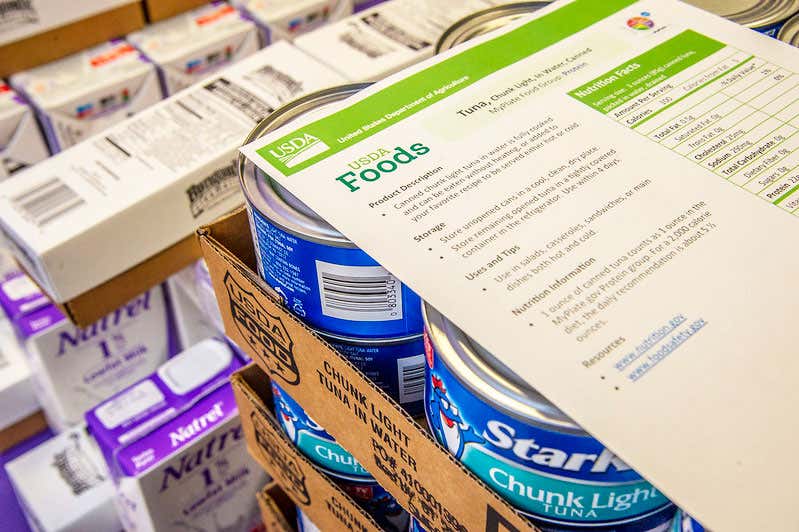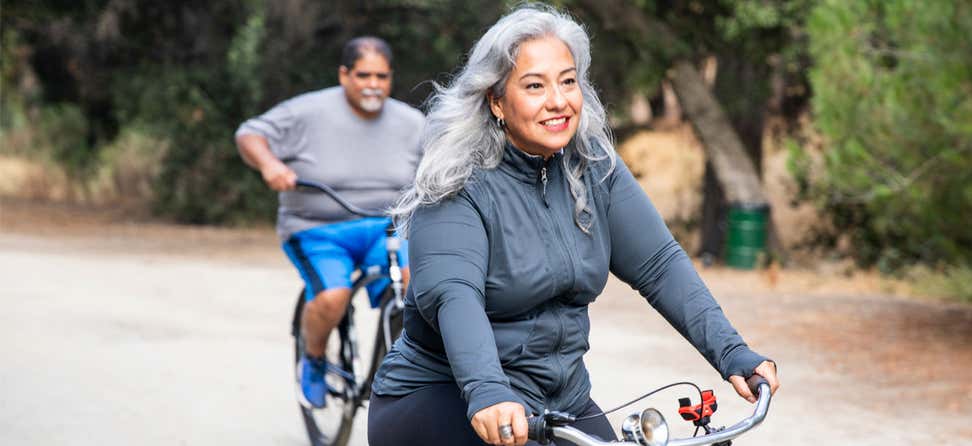You may know about the physical health problems that often occur alongside obesity, but did you know that mental health problems and food insecurity have also been linked to having excess weight?
Research indicates that these three conditions are related, but it’s not clear if one (or two) of them tend to cause the other(s), or if they have other causes in common. Not only that, the relationships among these three conditions might differ by sex, racial/ethnic group, or other identity category. Unfortunately, not enough research has been done with diverse groups to provide clear answers.
Even though researchers aren’t sure exactly how obesity, mental health problems, and food insecurity relate to each other, just knowing that they are related is helpful—if you or someone you care for is at risk for or has one of these conditions, you’ll know to check for signs of the others.
Let’s take a closer look at these three conditions:
- Obesity is a state of excess body weight, defined as body mass index (BMI)—an indirect measure of body fat based on height and weight—of 30 or more kilograms per meter squared. You can find your BMI by entering your height and weight into this calculator. However, BMI does not take body composition into account. So while BMI is useful as a quick way to estimate body fat, it is not a perfect measure.
- Mental health problems include mood and anxiety disorders, depression, and bipolar disorder, among others. Feelings of depression or excessive anxiety are not normal parts of aging, and even though they are treatable just like other conditions such as diabetes or high blood pressure, more than half of adults with mental health problems do not receive the treatment they need.
- Food insecurity has been defined as not having the resources to consistently access enough food for a healthy, active life. This is not the same as hunger, which refers to a personal, physical feeling of discomfort.
How common are obesity, mental health problems, and food insecurity in older adults in the United States?
- Almost 43% of people age 60 and older are living with obesity, which represents millions of older adults. This figure is much higher than it was in the late 1980s-early 1990s, when about 24 percent of people in this age group had obesity.
- Around Around 20% of people age 55 and older have some type of mental health concern. Depression is the most common mental health problem among older adults; other common conditions include anxiety and mood disorders.
- About 7% of people age 60 and older were food insecure in 2019, which is the most recent year for which we have data. This represents more than 5 million seniors across the country. This percentage varies by state, with a low of about 3% in Minnesota to a high of nearly 14% in the District of Columbia.
The COVID-19 pandemic introduced new challenges for older adults trying to stay mentally healthy, access healthy foods, and manage their weight. For example, one survey found that people age 65 and older were more likely to report no change in their physical activity levels (52%) or lower levels of physical activity (27%) during the pandemic. Only 12% reported doing more physical activity.
As researchers continue to study data collected during the pandemic, it will become more clear what impact the pandemic has had on older adults’ weight, mental health, and food security.
What do we know about the connections between obesity, mental health, and food insecurity?
Obesity and mental health: Older adults who carry excess weight often struggle with depression and other mental health disorders. For example, one study found that adults with excess weight had a 55 percent higher risk of developing depression over their lifetime compared to people that did not struggle with obesity. Another study found that middle- and older-aged adults with obesity and depression were more likely to develop disabilities compared with those who had normal weights or had obesity or depression alone.
People with obesity may be more susceptible to mental health problems for multiple reasons, such as quality of life challenges (e.g., difficulty with physical and occupational functions), weight bias and discrimination (negative stereotypes and attitudes that label people with obesity as unattractive, lazy, and undisciplined), poor body image, and inflammation.
Obesity and food insecurity: The relationship between obesity and food insecurity used to be considered counterintuitive. But as more research has been done, key researchers in this area concluded that coexistence of the two conditions is expected given that both result from economic and social disadvantages.
People with low incomes and food insecurity can be more vulnerable to obesity because of the challenges they face to making healthy choices, such as limited financial resources, less access to healthy foods, high levels of stress, limited access to health care, and fewer opportunities for physical activity.
One study that looked at obesity, food insecurity, and depression found that women who had a BMI of 30 or higher and also reported food insecurity were at a significantly higher risk for depression than women who did not report food insecurity.
Food insecurity and mental health: Struggling to put enough food on the table has been linked to poorer overall health, depression, muscle weakness, and decreased bone mass, which may lead to conditions like osteoporosis. A recent study suggested that food insecurity in adults ages 50 and older is associated with more wear and tear on the body, but enrolling in the SNAP program seemed to help protect against the poor health outcomes noted with food insecurity’s increasing bodily wear and tear.
What can older adults do to get help?
The good news is that solutions exist to help older adults receive enough nutrition to maintain a healthy, active, and independent life. One of the most widespread solutions is the Supplemental Nutrition Assistance Program (SNAP), formerly known as food stamps. SNAP is a federal government program that helps eligible individuals and families buy the food they need to maintain good health, such as fruits and vegetables, whole grain breads and cereals, dairy products, fish, lean meats and poultry, and more. The average SNAP benefit for a one-person senior household is $118 per month.1 NCOA's BenefitsCheckup.org has a handy interactive map you can use to find SNAP benefit amounts by state, SNAP income limits, and other information.
When older adults add more nutrient-rich foods to their diets using SNAP benefits, they can reduce their risk of health problems that compromise quality of life while also supporting efforts to manage their weight.
The pandemic has led to challenges in older adults’ efforts to manage their weight and maintain positive mental health.
Knowing that both of these conditions may be linked to each other and to food insecurity is concerning, but an upside is that you can better monitor your health and consider solutions, like SNAP, to address one or more of these conditions.
To learn more about this topic and other healthy aging issues, join us on May 2, 2024, for our free, 7th Annual Older Adult Mental Health Awareness Day Symposium.
Source
1. USDA. Characteristics of Supplemental Nutrition Assisance Program Households in 2020. June 2022. Found on the internet at https://fns-prod.azureedge.us/sites/default/files/resource-files/Characteristics2020.pdf










